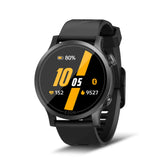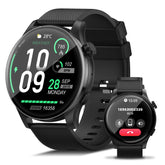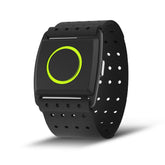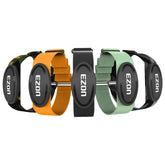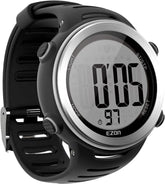Optimal Heart Rates for Different Workouts: A Comprehensive Guide
Understanding your heart rate during workouts is crucial for optimizing performance, enhancing fitness, and ensuring safety. Different types of exercises require different heart rate targets, and factors such as age, fitness level, and workout intensity play significant roles in determining these rates. This comprehensive guide delves into the ideal heart rate ranges for various workouts like running, cycling, and weightlifting, and highlights the importance of using tools like a heart rate monitor watch and the best sports watch for workouts to track your progress.
Understanding Heart Rate Zones
Heart rate can be categorized into different zones based on intensity levels. These zones are typically expressed as a percentage of your maximum heart rate (MHR). A common formula to estimate MHR is:
MHR = 220 - your age
Once you have your MHR, you can determine your heart rate zones:
- Resting Zone (60-70% of MHR): Light activity, such as walking or gentle stretching.
- Fat Burn Zone (70-80% of MHR): Moderate-intensity exercise, ideal for weight loss and endurance.
- Aerobic Zone (80-90% of MHR): Vigorous activity that improves cardiovascular fitness.
- Anaerobic Zone (90-100% of MHR): High-intensity exercise for building power and speed.
Heart Rate Targets for Different Workouts
1. Running
- Warm-Up: Aim for 50-60% of MHR.
- Easy Run: 60-70% of MHR. This is the fat burn zone, ideal for long, steady runs.
- Tempo Run: 70-85% of MHR. This intense running increases endurance and speed.
- Interval Training: 85-95% of MHR. Short bursts of high intensity followed by recovery.
2. Cycling
- Leisure Cycling: 50-60% of MHR. Ideal for warm-ups or cool downs.
- Steady-State Cycling: 60-75% of MHR. Great for building aerobic capacity.
- Hill Climbing or Intense Rides: 75-90% of MHR. This zone improves strength and endurance.
- Sprint Intervals: 90-100% of MHR. Short, intense bursts to build speed.
3. Weightlifting
- Warm-Up Sets: 50-60% of MHR. Prepare muscles for heavier lifts.
- Strength Training: 60-75% of MHR. Focus on compound movements and moderate weights.
- High-Intensity Sets: 75-85% of MHR. Short, intense sets with heavier weights.
- Circuit Training: 80-90% of MHR. Combining strength with cardio elements to elevate heart rate.
4. HIIT (High-Intensity Interval Training)
- During Work Intervals: 85-95% of MHR. Push your limits during high-intensity bursts.
- During Rest Intervals: 60-70% of MHR. Allow for recovery while keeping the heart engaged.
Factors Influencing Heart Rate
1. Age
As you age, your maximum heart rate typically decreases. This affects the optimal heart rate ranges for workouts. For instance, a 30-year-old may have a maximum heart rate of 190 bpm, while a 50-year-old may have an MHR of 170 bpm.
2. Fitness Level
Individuals with higher fitness levels may have lower resting heart rates and can sustain higher intensities without reaching their maximum heart rate. Regular training can help improve cardiovascular efficiency and increase overall endurance.
3. Hydration and Nutrition
Proper hydration and nutrition can impact heart rate response during exercise. Dehydration can lead to an elevated heart rate, while adequate fuel can help maintain optimal performance.
4. Stress Levels
Stress can influence your heart rate even during workouts. Utilizing a stress tracking watch can help monitor your heart rate variability (HRV) and provide insights into your overall well-being.
The Role of Technology in Monitoring Heart Rate
Utilizing technology can significantly enhance your understanding of heart rate during workouts. Here are some tools to consider:
1. Heart Rate Monitor Watch
A heart rate monitor watch provides real-time data on your heart rate, allowing you to track your intensity levels effectively. Look for features such as continuous heart rate monitoring and customized heart rate zones.
2. Best Sports Watch for Workouts
The best sports watch for workouts offers a combination of heart rate tracking, GPS capabilities, and performance metrics. Features to look for include:
- Multi-sport tracking: Ability to track various activities like running, cycling, and swimming.
- Durability: Water resistance and rugged design for outdoor activities.
- Long battery life: Essential for extended training sessions.
Conclusion
Understanding optimal heart rates for different workouts is vital for enhancing performance and achieving fitness goals. By knowing your heart rate zones and utilizing tools like a heart rate monitor watch or the best sports watch for workouts, you can tailor your training to maximize efficiency and safety. Embrace the power of heart rate tracking, and take control of your fitness journey with informed decisions that lead to lasting success!
